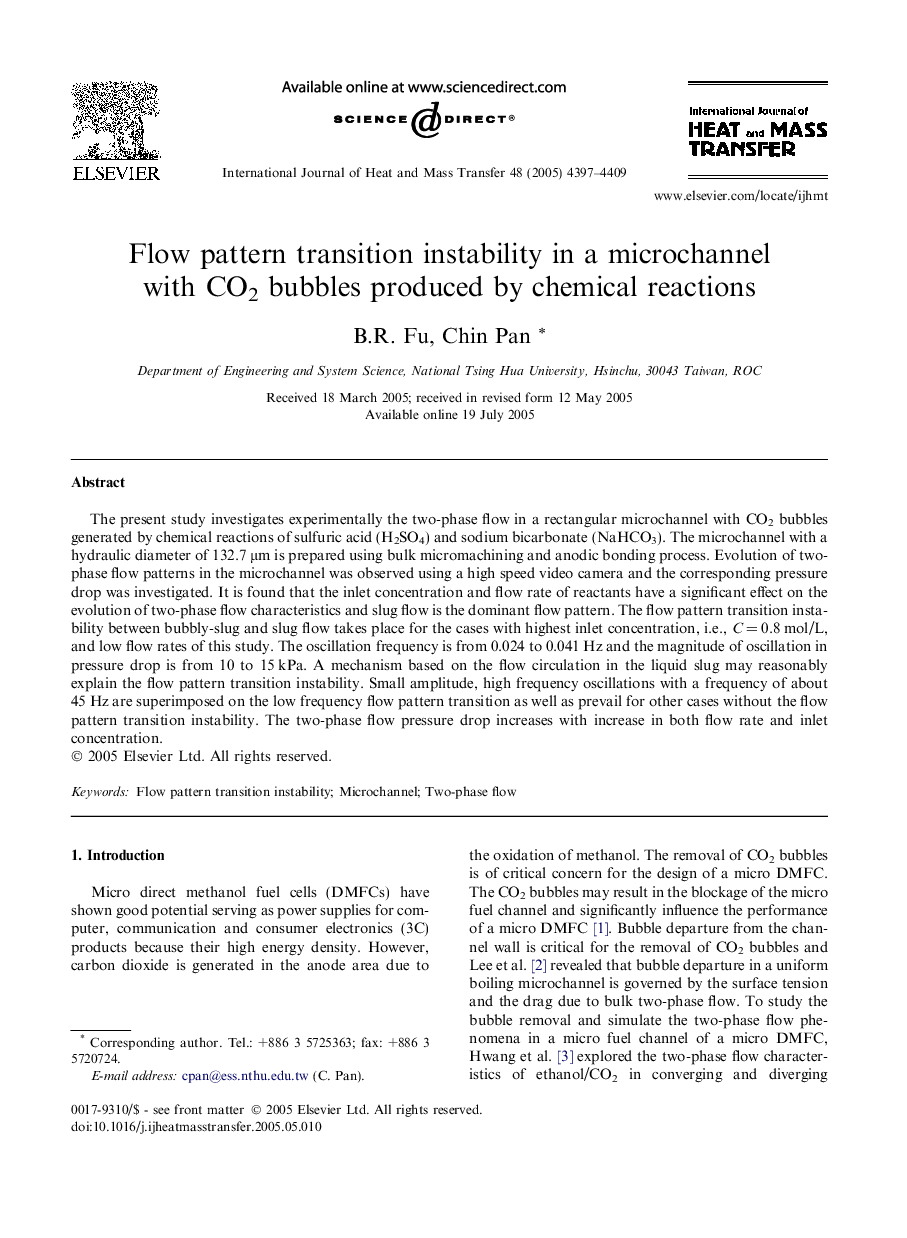| Article ID | Journal | Published Year | Pages | File Type |
|---|---|---|---|---|
| 662767 | International Journal of Heat and Mass Transfer | 2005 | 13 Pages |
The present study investigates experimentally the two-phase flow in a rectangular microchannel with CO2 bubbles generated by chemical reactions of sulfuric acid (H2SO4) and sodium bicarbonate (NaHCO3). The microchannel with a hydraulic diameter of 132.7 μm is prepared using bulk micromachining and anodic bonding process. Evolution of two-phase flow patterns in the microchannel was observed using a high speed video camera and the corresponding pressure drop was investigated. It is found that the inlet concentration and flow rate of reactants have a significant effect on the evolution of two-phase flow characteristics and slug flow is the dominant flow pattern. The flow pattern transition instability between bubbly-slug and slug flow takes place for the cases with highest inlet concentration, i.e., C = 0.8 mol/L, and low flow rates of this study. The oscillation frequency is from 0.024 to 0.041 Hz and the magnitude of oscillation in pressure drop is from 10 to 15 kPa. A mechanism based on the flow circulation in the liquid slug may reasonably explain the flow pattern transition instability. Small amplitude, high frequency oscillations with a frequency of about 45 Hz are superimposed on the low frequency flow pattern transition as well as prevail for other cases without the flow pattern transition instability. The two-phase flow pressure drop increases with increase in both flow rate and inlet concentration.
